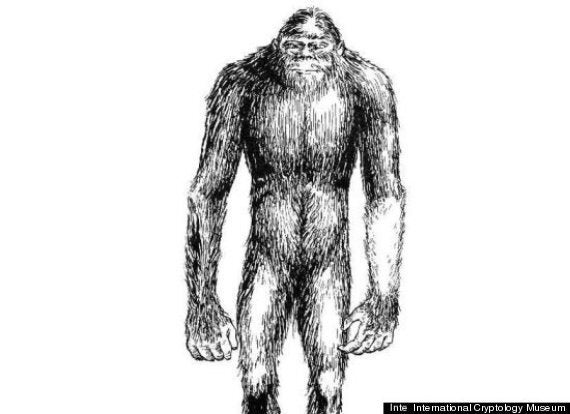DNA tests on mysterious hairs found on a Yeti trek have reportedly revealed they come from an “unknown mammal closely related to man.”
Scientists collected the hairs in a cave in the Siberian Kemerovo region last year.
According to the tests, the hairs come from a “human-like creature which is not a Homosapien, yet is more closely related to man than a monkey”, The Siberian Times reports.
Scroll down for a gallery of Yeti sightings

DNA analysis of this hair found on last year's Yeti hunt has been released
The newspaper cites an official website of a regional government in Russia as its source.
It quotes Professor Valentin Sapunov as saying: “We had ten samples of hair to study, and have concluded that they belong to a mammal, but not a human, and not the animals known to the area where they were found, like a bear, or wolf, or goat, or any other animal.”
It adds the report gives “strangely scant details” and refers to speculation that alleged sightings may boost tourism in the area.
Sapunov, who is a professor at the State Hydrometeorological University in St. Petersburg, told The Moscow Times he was "60 to 70 per cent" certain the hairs belong to a Yeti-like creature.
Yet Jeff Meldrum, a biologist and cryptozoologist at Idaho State University, has poured scorn on the expedition which yielded the hairs.
He said: "There was no expedition. The conference participants were accompanied by the press on a field trip to a cave site. It is my opinion that the 'evidence' found in the cave was unreliable."

An illustration of the creature reported to inhabit the Kemerovo region of Siberia
Meldrum, who went on the trek, added in an email to the newspaper: "There was no other sign of occupation in the cave except a few empty soda cans and snack food wrappers."
The latest findings come after a spate of sightings were reported in the Kemerovo region.
The beast was apparently spotted in the Shorsky National Park in September, with Trud newspaper quoting government spokesman Sergei Adlyakov as saying: “The creature did not look like a bear and quickly disappeared after breaking some branches of the bushes.”
In August, fisherman Vitaly Vershinin told a local Siberian newspaper he had spotted two bear-like creatures drinking at the water’s edge.
Vershinin said: “When they noticed me, they easily stood straight upright and went away…I did not wish to chase them.”
SEE ALSO:
Vershinin returned to the spot, near Myski village, with a TV crew, explaining he had initially believed the pair to be human.
He said: “We shouted at them, do you need help?
“And they just rushed away, all in fur, walking on two legs, making way through the bushes with two other limbs.
“What did we think? It could not be bears, as the bear walks on all-fours, and they ran on two…so then they were gone.”
A further account was reported to officials in the Kuzbass region.
The sighting reported “some tall animals looking like people” on a rock above the Mras-Su River.
The unnamed source added: “Our binoculars were broken and did not let us see them sharply. We waved at the animals but they did not respond, then quickly ran back into the forest, walking on two legs.
“We realised they were not in dark clothes but covered by dark fur. They did walk like people.”

Igor Burtsev, pictured in the Kemerovo region during the Yeti hunt of 2011
Russia will shortly host a conference and expedition in serach of the Yeti, Igor Burtsev, head of the International Centre of Hominology said.
While he did not attend the trek, Loren Coleman, founder and director of the International Cryptology Museum in Portland, Maine, told The Huffington Post: "They're sometimes seen at the edge of a forest just staring at people and not really considered as wild creatures, compared to some Yeti reports in Nepal where they reportedly attack yaks or sherpas."
Sightings of the creatures in the region have increased three-fold over the past 20 years, prompting scientists at Moscow's Darwin Museum to speculate that there may be a small population of these creatures.
"Some of the Neanderthals, however, may have survived to this day in some mountainous wooded habitats that are more or less off limits to their arch foes. No clothing on them, no tools in hands and no fire in the household. Only round-the-clock watchfulness for a Homo sapiens around."